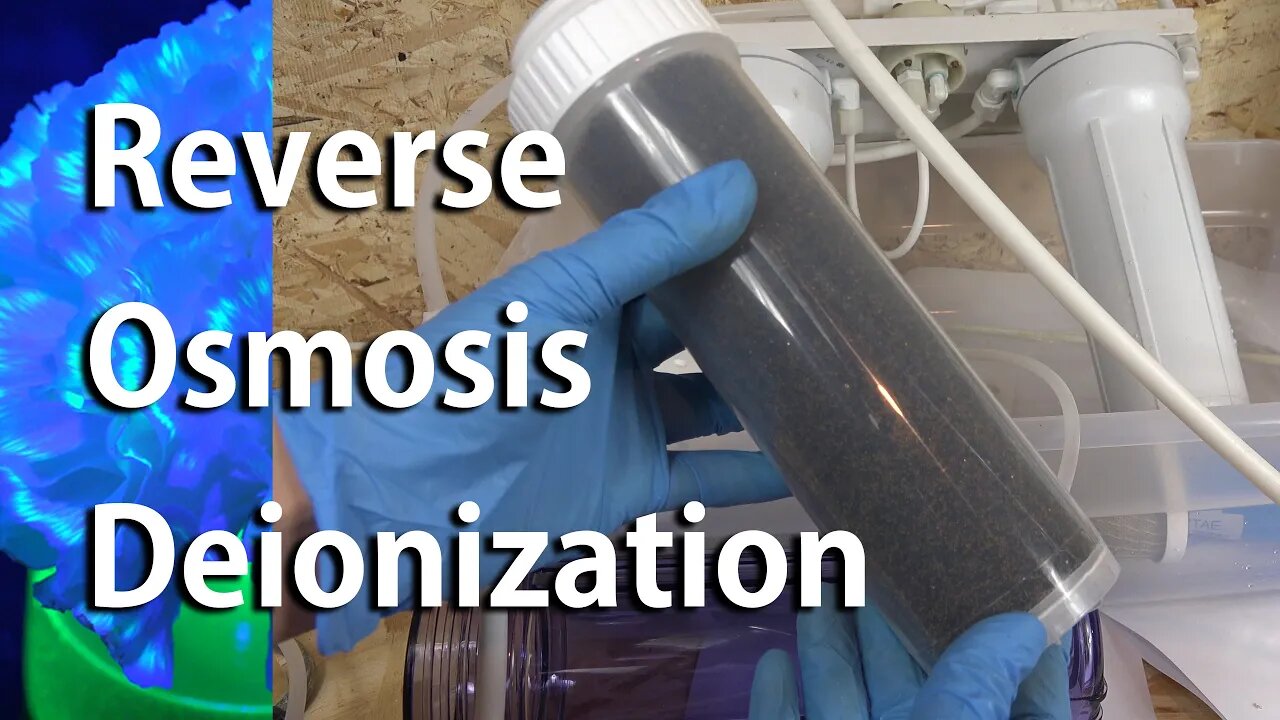Premium Only Content

Amateur Lab Equipment: Reverse Osmosis Deionization Systems for Purifying Water
In this video we discuss the components, usage, and science behind a Reverse Osmosis Deionization unit for purifying water.
Most sources of water that an amateur chemist may use (like tap water) contain dissolved salts. These salts usually consist of sodium, calcium, or magnesium carbonates, chlorides and sulfates. Water containing significant quantities of these minerals is often called "hard water". And they can be easily observed by letting a quantity of water evaporate completely. While these minerals are usually very low in concentration and inconsequential for most domestic purposes like drinking, cooking or bathing, they are a contaminant for performing chemistry. This can be particularly detrimental to sensitive experiments like analytical chemistry, crystal growing, or electrochemistry. So removal is preferred.
The historical technique for removing non-volatile mineral contaminants is distillation. For very small quantities distillation is cheap and effective as most amateur chemists already have distillation equipment. But for larger quantities, distillation is very energy intensive and expensive due to electricity costs. It's also extremely slow.
Reverse Osmosis Deionization is now the standard for making purified water as such systems are much easier to purchase in the modern era. A basic system has a carbon prefilter that takes in water and neutralize the chlorine normally added to sterilize. This is done to ensure the chlorine cannot damage the reverse osmosis membrane. The water then proceeds to the membrane that consists of a rolled envelope of polyimide plastic. This membrane passes water, but resists the passage of minerals and salts. The wastewater that contains the leftover minerals is discarded, while the permeate water with most of the minerals removed is sent to a column of deionization resin. This resin is made of a special ionically charged plastic that swaps out mineral ions in the water for hydronium or hydroxide ions. Those ions neutralize to become water and the result is purified water with all the minerals removed. While not strictly necessary, purified water improves the quality and reproducibility of amateur chemistry experiments so a reverse osmosis system is a recommended addition to an established amateur lab.
Donate to NurdRage!
Through Patreon (preferred): https://www.patreon.com/NurdRage
Through Bitcoin: 1NurdRAge7PNR4ULrbrpcYvc9RC4LDp9pS
Glassware generously provided by http://www.alchemylabsupply.com/
Use the discount code "nurdrage" for a 5% discount.
Twitter: https://twitter.com/NurdRage
Reddit: https://www.reddit.com/r/NurdRage/
Instagram: https://www.instagram.com/nurdrageyoutube/
-
 2:11:07
2:11:07
Matt Kohrs
11 hours agoMSTR Squeezes Higher, Bitcoin To $100k & Nvidia Post Earnings || The MK Show
30.3K1 -
 42:07
42:07
BonginoReport
5 hours agoNikki Haley's Hatred of Tulsi Gabbard Just Made Me a Bigger Fan (Ep.90) - 11/21/24
78.2K172 -
 28:41
28:41
Professor Nez
10 hours ago🚨BLOOD on their HANDS! The Man Biden & Kamala Flew In Finally Faces JUSTICE for Laken Riley
37.6K20 -
 1:06:27
1:06:27
2 MIKES LIVE
3 hours agoThe Mike Schwartz Show 11-21-2024
37.1K -
 15:07
15:07
PMG
12 hours ago $0.69 earned"President Trump's Cabinet is Amazing!"
44.9K -
 LIVE
LIVE
Vigilant News Network
15 hours agoHeavily-Vaxxed County Faces Grim Reality | The Daily Dose
992 watching -
 1:22:22
1:22:22
Game On!
15 hours ago $11.32 earnedRussell Wilson MVP? TNF Steelers vs Browns Game of the Year!
73.7K -
 13:57
13:57
This Bahamian Gyal
16 hours agoSo, now MIKA and JOE want to work with HITLER? Sunny Hostin was right!
45.5K44 -
 59:38
59:38
The Tom Renz Show
18 hours ago"MAGA & Unity With Pastor Bernadette Smith"
29.7K2 -
 2:12
2:12
Memology 101
15 hours ago $4.06 earnedTYT's Cenk Uygur DESTROYS deluded self-proclaimed election Nostradamus over FAILED prediction "keys"
26.2K17